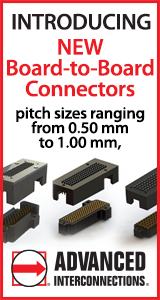|

|
Lower-Temperature Lead-Free Solder Paste for Wafer-Level Package
Materials Tech |
|
Authored By:Hongwen Zhang, Ph.D., Tyler Richmond, Jie Geng Ph.D., Huaguang Wang Ph.D. Indium Corporation NY, USA Tybarius Harter SUNY Polytechnic Institute NY, USA Diego Prado Cornell University NY, USA SummaryAn In-containing lower-temperature solder paste has been studied for wafer-level package (WLP) application. The daisy-chained WLP256 assemblies (SAC305 ball with 0.25mm diameter and 0.4mm pitch) were reflowed with the In-containing lower-temperature paste to form the joints under a variety of reflow profiles, whose peak temperatures ranged from 200°C up to 240°C. The paste-to-ball volume ratio was kept consistently at 1:4. The joint morphology changed with the reflow profiles. Under the 200°C peak reflow, hybrid joints were formed in which the mixing zone, dominated by the In-containing solder, was present at the PCB side while the SAC305 ball at the chip side maintained the original morphology. Increasing the reflow peak temperature to 210°C and above led to the formation of the homogeneous joint, in which the SAC305 ball being fully fused with the lower-temperature solder paste and no mixing zone being clearly identified through SEM imaging and EDX mapping. Using the higher paste-to-ball volume ratio of 1:2 to build the drop-shock testing package, a customized design of 10x10 BGA assembly, increases the reflow peak temperature to around 220oC and above to achieve the homogeneous joint. Temperature cycling reliability tests were conducted with the profile of -40 to 125°C and 20 minutes dwelling time. Drop-shock tests were implemented with a ball-drop tester, in which a 110gm steel ball was dropped from 500mm height to create around 6400 g-force acceleration on the PCB board. SAC305, reflowed with a 240°C peak temperature, was also tested as the control leg for both tests. The In-containing low-temperature solder paste performed comparable to or superior to SAC305 based on the reflow profiles being used in both drop-shock and TCT reliability. A profile peak temperature of 210°C, the threshold temperature to form the homogeneous joint, resulted in the best TCT performance compared to the others. Similarly, the homogeneous joints in drop-shock packages, using 220oC reflow profile, led to the best performance among all profiles as well. After TCT, the crack initiation and propagation in the joints of the SAC305 ball with SAC paste occurred at the chip side. Cracking behavior in the joints of the SAC ball and lower-temperature In-containing paste maintained the similarity regardless of the reflow profiles. Drop-shock rupture occurred all along the PCB pad and solder interface. The detected Cu, Sn and In on the rupture surface indicates that the drop-shock failure is majorly through IMC interface. Additional microstructural evolution and failure analysis are still ongoing. In conclusion, In-containing lower-temperature paste can be reflowed under a relatively lower peak temperature profile and outperform SAC305 paste in the current WLP256 application. Depending on the paste-to-ball volume ratio, the peak temperatures around 210oC to 220oC, the threshold temperature of forming the homogeneous joint, led the best reliability performance among all profiles. ConclusionsDFLT was demonstrated to outperform SAC305 in both drop shock testing and WLP256 TCT regardless of the reflow profiles. Reflow profiles impacts on the performance were observed, in which P210, the reflow profile allowed the just-formation of homogeneous joints for WLP assemblies, led to the best performance in TCT, and P220, the reflow profiles similarly allowed the just-formation of homogeneous joints for drop-shock packages, resulted in the best drop-shock performance. Hybrid joints were seen with lower-peak-temperature reflow profiles (P200 and P210 for the drop-shock packages and P200 for WLP assemblies), while the higher reflow temperatures (220oC and above peak temperature for drop-shock packages and 210oC and above for WLP assemblies) led to the formation of the homogeneous joints. It was noticed that the hybrid joints did not underperform the homogeneous joints when reflowed using the traditional SAC profile. The failure modes of DFLT for all profiles were the same as SAC305. In was involved in the formation of the interfacial IMC, the Ag-containing IMC precipitates, and the solid solution matrix. In is assumed to be the main contributor towards the improved performance, although more insight studies are still ongoing. Initially Published in the SMTA Proceedings |
|
Comments
|
|
|
|
|


